
216MHz
user guide
920SR speaker
921T
922T handheld transmitter
923C charging stand

216MHz
user guide
920SR speaker
921T
922T handheld transmitter
923C charging stand

contents
introduction . . . . . . . . . . . . . . . . . . . . . . .1 understanding sound field . . . . . . . . . . . .2 setup
parts and accessories included
with
system setup and
920SR speaker placement
and
921T
922T handheld transmitter
aux in ??? connecting to
TV, CD, VCR, etc. . . . . . . . . . . . . . . . . . . . . .47
aux out ??? connecting to
personal
additional system
Radium channel numbers and corresponding frequencies . . . . . . . . . . . .54
product

introduction
Congratulations on the purchase of your new Radium sound field system! With proper care and use it will become one of your most valuable classroom educational tools. Students will be able to consistently and easily understand the teacher, regardless of their location in the classroom, or competing internal or external background noise. Teachers can now speak all day in their normal voice without having to raise their voice to get their students??? attention.
Numerous studies show that classrooms using sound field enjoy better student comprehen- sion, increased student participation, better grades and fewer behavioral referrals.
Read this manual carefully to become familiar with your system and to get the most out of its many features and options.
1

understanding sound field and its benefits
without sound field
? ?
???distance
???noise
???echo
with sound field
???distance
???noise
???echo
2

setup tips
IMPORTANT!
Be sure you place your Radium speaker and transmitter units on their charger overnight ??? for a minimum of 12 hours ??? before turning the power on and/or using them for the first time. Failing to do so can reduce battery capacity.
Basic setup tips
First ??? Identify a front corner of the room ??? the location from where the teacher normally teaches.
Second ??? Take a good look around, paying close attention to power outlet and other electronic equipment locations. Ideally, the speaker should be placed at a
Third ??? Determine whether to mount the speaker on the wall as shown in diagram 1, or place it on a sturdy surface using the
diagram 1
3
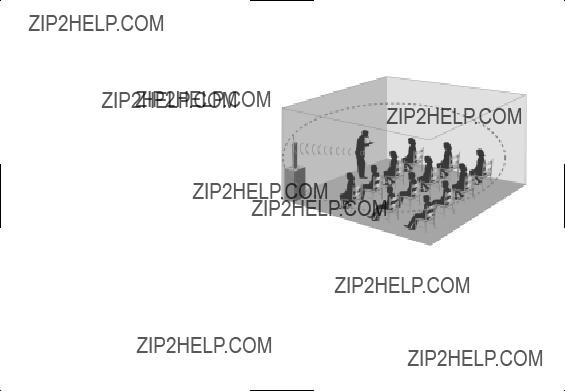
setup tips (cont???d)
If placing the speaker on a table or surface top, consider the following:
???Choose a location that provides easy access for the teacher, and is out of the way of students and main traffic areas. The speaker should be placed at least 6 feet/1.8 meters away from where the teacher stands.
4

setup tips (cont???d)
???Choose a table or surface top that is sturdy.
Make sure the table or cabinet is structurally solid, sturdy and out of the way of foot traffic.
???Properly mount and securely fasten the
If mounting on the wall, consider the following:
???The power supply cord needs to reach the wall outlet. Make sure the power supply is within reach of the speaker from its
???The teacher should be able to reach the controls located on top of the speaker once it???s mounted. Once the volume is set at a comfortable level, the speaker power switch located on the lower right side of the speaker can be easily accessed by the teacher. Follow the instructions on page 28 for setting the volume at the proper level.
???Never mount the speaker upside down, or horizontally. The speaker unit must be mounted such that the controls are located at the top of the unit.
5

daily operating tips
In the morning ???
???Turn transmitter power ???on??? and put microphone on.
???Turn speaker column power ???on???. The speaker should remain plugged into a wall power outlet during the day ??? with the power in the ???on??? position. Turn power switch to the ???off??? position at night after each use. The internal battery is not being used while the speaker is plugged into a wall outlet.
???To operate using the internal battery as a portable system, simply unplug the speaker before use and plug back in after use ??? making sure you return power switch to ???off??? position while
In the evening after each use ???
???Turn transmitter power ???off???, and place it back onto the charging stand; confirm that the ???charge??? indicator light illuminates. Transmitters not in use should always be placed on the charging stand ??? this is their home base station.
???Turn speaker column power ???off???. Leave speaker plugged into wall power outlet, but confirm that the power has been turned ???off.???
6

daily operating tips (cont???d)
Battery care and maintenance tips ???
???The speaker battery will last approximately 2 years depending on usage.
???When not in use, leave speaker plugged into wall outlet with power switch in ???off??? position.
???Keep speaker away from heating units ??? use/store in a cool dry place.
???When using speaker battery power (unplugged from wall), always remember to return power switch to ???off??? position after use.
???Never mount/use speaker horizontally or upside down. Controls should be accessible from top of unit.
???Plan on buying new NiMH batteries for your transmitter every 12 months. Alkaline batteries can also be used as
???Remember to charge all batteries overnight before initial use.
7

daily operating tips (cont???d)
Do not coil the microphone ??? since it also acts as your antenna, coiling or wrapping the cord will affect its range and may also reduce its life.
Speak at a normal level ??? the system is projecting your voice for you.
8

parts and accessories included with system
and/ or
or
9

1column speaker receiver (920SR)
2
and/or
handheld transmitter (922T)
3
4charging stand (923C)
5power supply, receiver
6power supply, charging stand (AT0819)
7receiver antenna
(AT0831)
8speaker table stand (AT0823)
or
wall mounting bracket (set of 2) (AT0820)
9elastic belt (AT0712)
10AA rechargeable NiMH batteries (AT0807)
11channel changer screwdriver
12auxiliary input/output cable
13auxiliary input cable (3.5mm??? dual RCA)
10
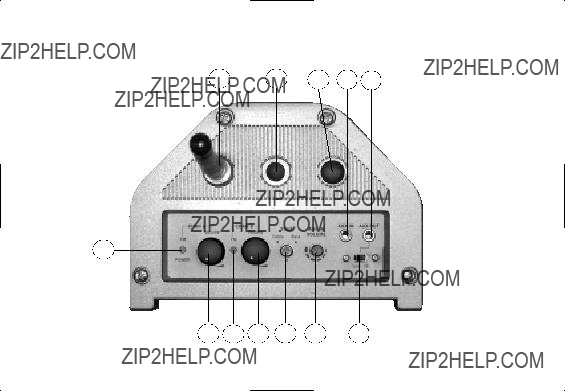
920SR column speaker features (top)
1
11
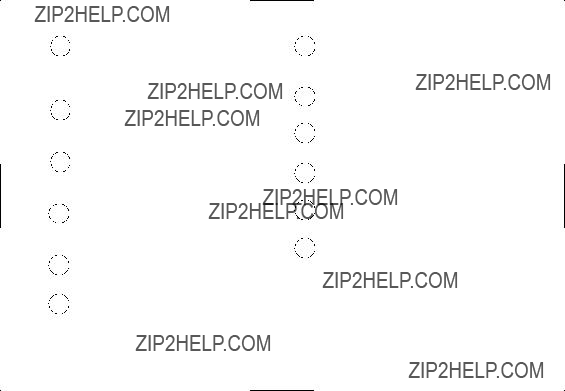
1power, low battery, and reception status indicator for channel A
2power switch and volume control for channel A
3reception status indicator for channel B
4power switch and volume control for channel B
5tone control
6aux input volume control
7aux output level switch
See page 42 for level setting chart
8antenna
9wall mount hole
10 extra antenna hole (not used)
11aux input jack (3.5mm, mono)
12aux output jack (3.5mm, mono)
12
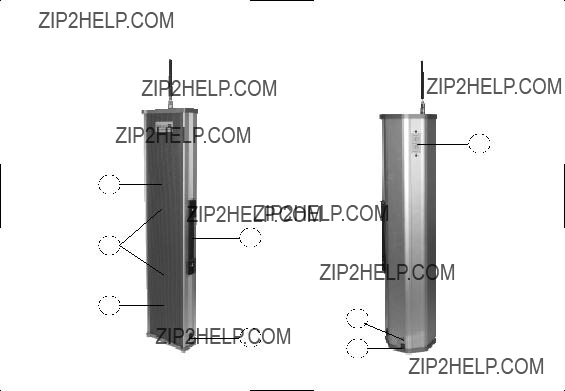
920SR column speaker features (front and back)
20
13
14
15
16
18
17
19
13

15internal rechargeable battery
16handle
17main power on/off switch
18power and charging indicator
14
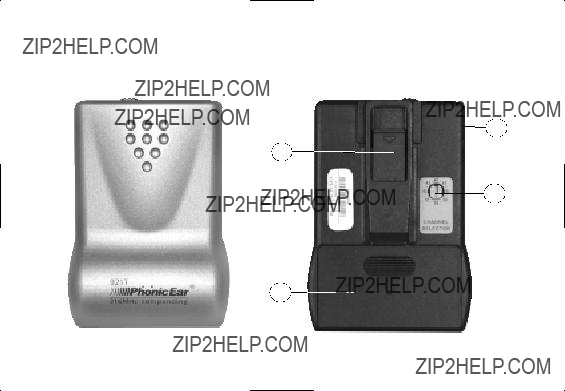
921T
3
1
4
2
15
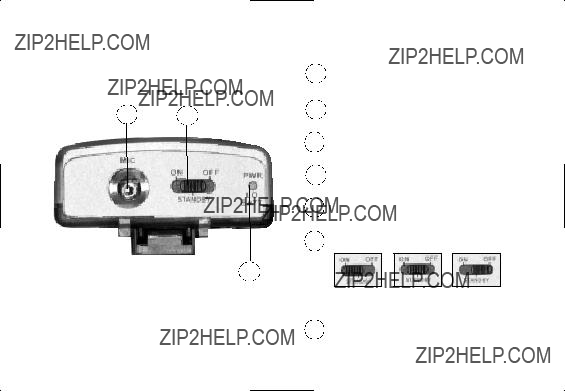
921T
top
56
1belt clip
2battery compartment 3 volume control
4channel selector
5 microphone input (2.5mm)
6 3 position power switch
7
7 power and low battery indicator light
16

922T handheld microphone features
1 LED indicator light
2 3 position power switch
17
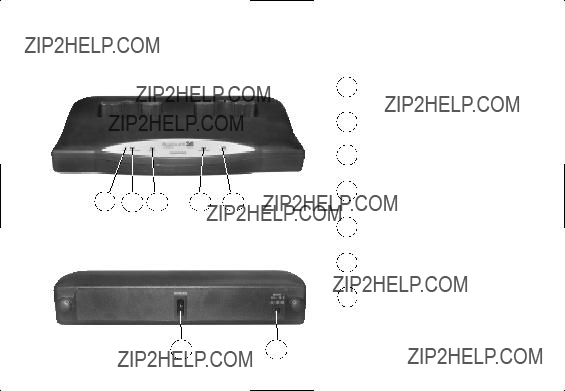
923C charging stand features
front
1 power indicator
2 pocket 1 charging indicator
3 pocket 1 full charge indicator
4 pocket 2 charging indicator
back
5 pocket 2 full charge indicator
6 power switch
7 DC power socket
18

2
1
1 Attach antenna to top of speaker
2Turn metal base of antenna clock- wise until secured tightly (do not
19

20

2
1
Red light =charging
Flashing red/green (equal duration) = 80
NOTE: Light is not illuminated during normal battery operation
charge nightly after every use
1Plug power supply into power/charging socket
2Plug power supply into wall socket
Recharging time is 8 hours if the battery is completely discharged and 4 to 7 hours if battery is only partially discharged.
NOTE: Battery operating time is
21
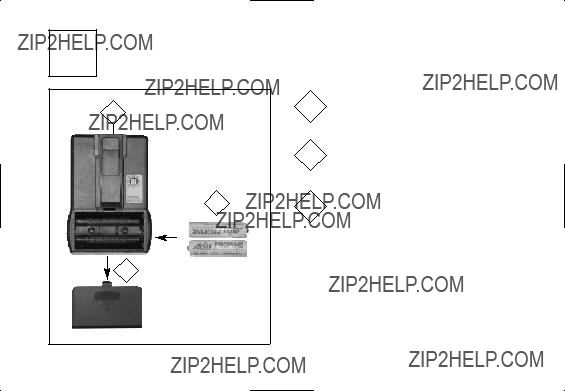
4 insert batteries in
1
2
WARNING: Never recharge alkaline batteries! This will cause damage to the unit and will void the product warranty.
22

5 insert batteries in handheld microphone
3
_ +
2
Insert two AA rechargeable 3 NiMH batteries
WARNING: Never recharge alkaline batteries! This will cause damage to the unit and will void the product warranty.
23

charger back
3
charger front
2
1
4
4
5
lights, the transmitter batteries are full charged and ready to go. (4 to 5 hours)
24

25
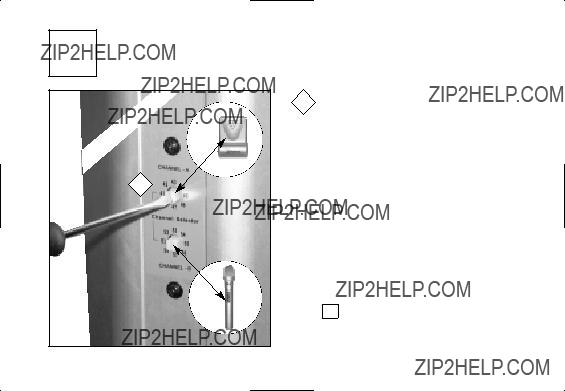
match
922T
1Use a screwdriver to adjust the Channel A selector on the back of the speaker to match the channel number of either the 921T and/or the 922T transmitter(s).
NOTE: Consider whether other Radium, EasyListener 2, or other
26

27

10 setting FM volume
Follow steps 1 or 2 below to adjust FM volume setting to proper level. Two people are needed to set the volume level. It is difficult to hear your own voice and make adjustments to it.
NOTE: The average volume setting is in the 11:00 position (see photo), but may change depending on room acoustics and noise level.
1With a sound level meter - Take a level reading in the ???A??? setting in the center of the room during normal classroom activity, and another reading of the teacher's amplified voice (without the class activity). The level of the teacher's voice should be set between
2Without a sound level meter - First, ask someone other than yourself (if you are the teacher) to listen to the amplified voice and make volume adjustments. An ideal volume level is achieved when the listener can hear the amplified voice at a comfortable level and the vol- ume level from the speaker and teacher???s mouth is comparable. If you can hear yourself through the loudspeakers, the volume setting may be too high and should be decreased. 28


= suggested placement of 920SR speaker
hallway
30
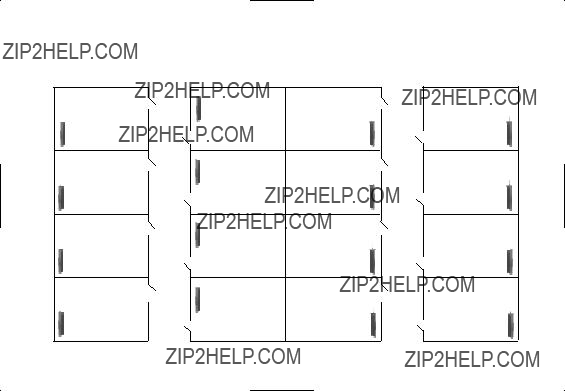
31
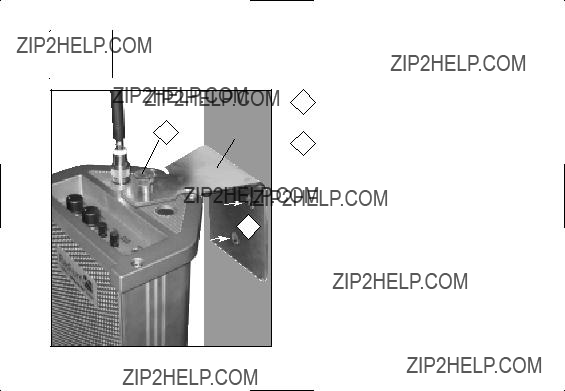
13a wall mounting (option 1)
1
32

13b mounting on floor stand (option 2)
??? Turn
1
AT0823
AT0824 floor stand is also available
33

13c seal wall mounting hole if using table stand
1 Place plastic plug into mounting bracket hole on top of speaker to keep out dust
1
34

14 921T
Boom mic cord
1 Plug microphone cord into mic jack on top of
1
35

Maximum distance from mic to mouth is 6 in/(15cm); 3 in/(7.5cm) is ideal.
36

16 turn power on
battery life
NiMH rechargeable AA = 12 hours (approx.)
Alkaline disposable AA = 15 hours (approx.)
WARNING: Never recharge alkaline batteries! This will cause damage to the unit and will void the product warranty.
37
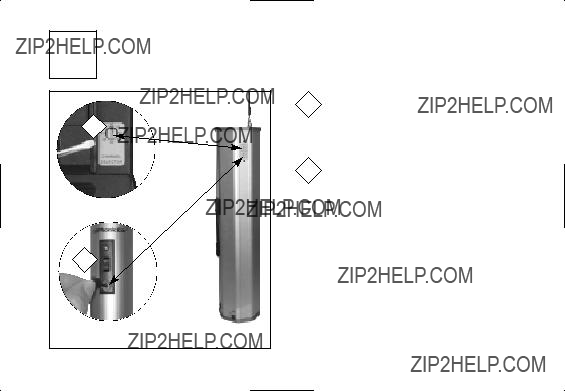

18 adjust
Increase transmitter volume for 1 greater mic sensitivity and sound
clarity
1
2
39

19 activate standby/mute mode
1
MUTE: Standby mode can also be used as a microphone/transmitter mute switch. The mute feature allows teachers to have a private conversation without needing to turn the transmitter off.
40

20 922T handheld transmitter operation turn power on
1
41

21 check indicator light
1 Check indicator light:
Continuous green = adequate power
Continuous red = low battery
1
battery life
NiMH rechargeable AA = 12 hours (approx.)
Alkaline disposable AA = 15 hours (approx.)
WARNING: Never recharge alkaline batteries! This will cause damage to the unit and will void the product warranty.
42

22 remove channel adjustment key
1 Open battery compartment door and remove batteries
2 Remove channel adjustment key
2
1
43
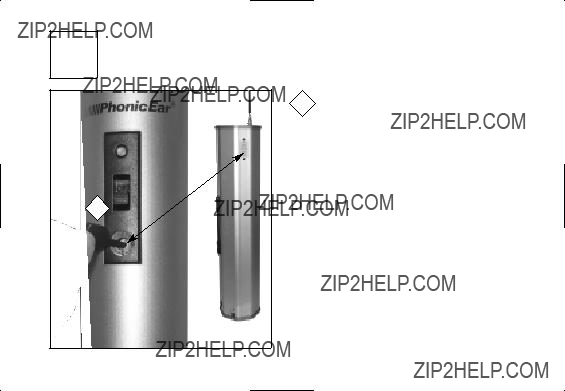
23 adjust transmitter channel to match receiver channel
920SR
44

24 standby mode
Activate standby mode to mute 1 voice and eliminate white noise
when not speaking
1
45

25 transmitters that can be used with 920SR receiver/speaker
???????????? = most compatible ??? = least compatible
46

1
2
VCR
1Using either the
2Use AUX IN VOLUME control to adjust volume
NOTE: AUX IN can be used simultaneously with both Channel A & B.
47
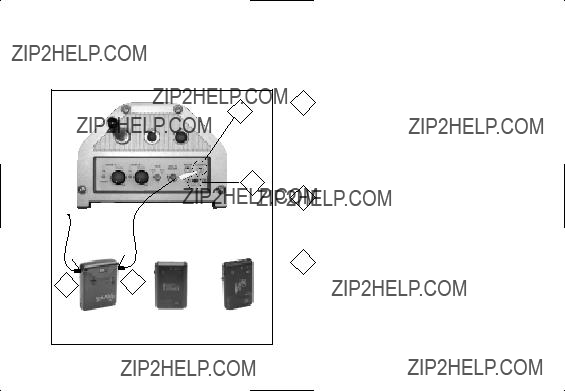
AT0529AAT0532-05
2 1
1
3
1Connect
2Connect antenna AT0529A (included with transmitter system) to Mic/Ant jack on transmitter
3Refer to level setting gide on next page to identify proper level for your transmitter
48

28 aux out transmitter compatibility chart and level setting guide
NOTE: Common transmitters and recommended level settings are shown below. Because the level setting is universal, other transmitters not listed below may be used as well ??? simply set the aux out level to the position at which the receiver wearer hears a strong
*For transmitters with a 3.5mm jack size, simply attach the transmitter to the AT0805 aux out accessory cord. For 2.5mm products, use the aux out adapter plug 
??? Requires special adaptor cord provided by Phonak (P/N 52117) and Radio Shack adaptor (P/N 274387).
49

additional system accessories
microphone options
AT0655
receiver accessories
50

additional system accessories (cont???d)
transmitter accessories
51

troubleshooting
no FM reception (Channel A, Channel B indicator does not have green light)
???Verify the transmitter is turned on
???Verify the frequency number on the trans- mitter matches the frequency number
on receiver
???Verify transmitter batteries are charged
???Verify speaker antenna is connected properly
weak sound from speaker
???Increase volume on the speaker
???Turn up transmitter volume
???Make sure AT0655 boom microphone (or other mic) is being worn correctly
speaker is receiving a signal but no sound is coming out
???Verify microphone is connected properly to transmitter and is working correctly
feedback from speaker
???Turn down the volume on the transmitter
???Turn down the volume on the speaker
???Make sure the person wearing the transmit- ter is not too close to the speaker
???Move speaker so that it is facing away from presenter and toward listeners
???Make sure AT0655 boom microphone (or other mic) is being worn correctly
52

troubleshooting (cont???d)
speaker does not turn on (power indicator does not flash red)
???Verify main power switch on the bottom of the unit is turned on
???Verify Channel A and Channel B volume control knobs are turned on
???Verify power supply is plugged securely into speaker and wall socket
???Verify wall socket works
speaker battery does not charge
???Connect power supply to speaker and charge for four hours. If speaker battery does not hold a charge, send the unit to Phonic Ear Service department for replace- ment (battery must be replaced after one year of continuous use).
speaker is picking up FM interference or hum
???Check to make sure no other wireless sys- tems are operating on similar frequencies
???Check to make sure the system is not placed too close to a computer
???Check to make sure metal objects are not placed too close to transmitter or speaker (i.e. jewelry, metal shelves)
amber charge light is flashing when I attempt to charge my transmitter
???Replace your batteries with a set of new NiMH cells (AT0807).
53

Radium channel numbers and corresponding frequencies
54

product specifications
two channel column speaker: 920SR
dimensions (WxHxD) 100 x 660 x 145 mm/ 3.9 x 26 x 5.7 in
weight 5kg/11lbs
recharging time 8 hours for initial charging 4 ??? 7 hours for recharging
battery operating time 5 ??? 8 hours (continuous operation)
speaker stand optional table stand (AT0823), floor stand (AT0824), or
wall brackets (AT0820)
squelch RSSI
55

product specifications (cont???d)
battery NiMH rechargeable (1600mA); alkaline disposable (2AA)
battery life NiMH rechargeable: 12 hours (approx.) alkaline disposable: 15 hours (approx.)
56

product specifications (cont???d)
handheld mic transmitter: 922T
charging stand: 923C
power supply AC adaptor (DC 12V/ 0.5A)
indicator lights LED green = battery ready LED orange = recharging LED red = power on
LED blinking orange = fault (battery bad)
recharging time NiMH (1300mA): 4 hr
dimensions (WxHxD) 135 x 47 x 230 mm/5.3 x 1.9 x 9 in
weight 360g/12.7oz
controls on/off switch
57

warranty
time period of warranty
This warranty will go into effect upon the date of purchase and will stay in effect as long as the instrument remains the property of the orig- inal owner. EASYLISTENER 2???, VOCALIGHT??? and ONWAVE??? have a
what is covered by this warranty
Any electronic component, which because of work- manship, manufacturing or design defects, fails to function properly under normal use during the life of this warranty will be replaced or repaired at no charge for parts or labor, when returned to the factory service center. Transportation in is paid by the cus- tomer. If it is determined that repair is not feasible, the entire unit may be replaced with an equiv- alent unit upon mutual agreement of the manufacturer and customer.
what is not covered by this warranty
This limited warranty does not apply to:
1.Malfunctions resulting from abuse, neglect or accident
2.Instruments connected, installed, used or adjusted in any manner contrary to instructions provided by the manufacturer
3.Consequential damages and damages resulting from delay or loss of this instrument. The exclu- sive remedy under this warranty is strictly limited to repair or replacement as herein provided
4.Products damaged in transit unless investigated by the shipper and returned to the warrantor with the investigation report
5.Peripheral accessories as itemized within the product specification sheet as applicable, when such items are not returned within 1 year from original purchase
6.Batteries if applicable
58

warranty (cont???d)
Phonic Ear Inc. reserves the right to make changes in the design or construction of any of its instruments at any time without incurring any obligation to make any changes whatsoever on units previously purchased.
This warranty is in lieu of all other expressed warranties. All expressed and implied warranties will terminate upon the expiration of this written warranty. No representative or person is authorized to represent or assume for us any liability in connection with the sale or use of our prod- ucts other than as set forth above.
what to do if you have questions
If you have any questions about service, call the service
department at 800.227.0735, then press 7.
what to do if you need service
If you require service under the warranty terms, obtain a service order form either online at www.phonicear. com/support.asp or through our U.S. customer
service department at 800.227.0735, then press 5
(or +1.707.769.1110 outside the U.S.). Fill the form out completely remembering to include:
1.Description of the problem
2.Your billing address
3.Your shipping address (if different from billing address)
4.Contact name and phone number
5.A P.O. number if the equipment is not under a warranty or service contract
59

warranty (cont???d)
Then, carefully package the equipment in the
original shipping container to prevent damage and send it postpaid to the service center near you:
USA/International:
Phonic Ear Inc.
3880 Cypress Drive
Petaluma, CA
U.S.A.
In Canada:
Phonic Ear Ltd.
Mississauga, Ontario
L5S 1E7 Canada
what to do if you have questions
If you have any questions about service, call the service department at 800.227.0735, then press 7.
about your batteries
To ensure that your batteries are as fresh as possible upon arrival, we have intentionally not installed them in your equipment.
install your batteries in your equipment now, then charge overnight before initial use
(see user guide for charging procedure).
avoid battery corrosion
To avoid battery corrosion and damage to your equipment, do not recharge disposable or rechargeable alkaline batteries. Before charg- ing any Phonic Ear equipment make sure only NiMH rechargeable batteries are installed. As an added precaution, remove batteries if the equipment will not be used for several weeks.
60

regulatory approvals and clearances
transmitter
This transmitter is authorized by rule under the Low Power Radio Service (47 C.F.R. Part 95) and must not cause harmful interference to TV reception or United States Navy SPASUR installations. You do not need an FCC license to operate this transmitter. This transmitter may only be used to provide: audi- tory assistance to persons with disabilities, persons who require language translation, or persons in edu- cational settings; health care services to the ill; law enforcement tracking services under agreement with a law enforcement agency; or automated maritime telecommunications system (AMTS) network control communications.
This device may not interfere with TV reception or federal government radar, and must accept any inter- ference received, including interference that may cause undesired operation.
IMPORTANT NOTE: To comply with FCC RF exposure compliance requirements, only use sup- plied antenna that is sold with this transmitter.
Use of any other antenna which has not been approved by the manufacturer will violate FCC rules and regulation and void the user???s authority to operate this device. This device and its antenna(s) must not be
61

regulatory approvals and clearances (cont???d)
receiver: part 15, subpart B
Tested to comply with
FCC Standards
FOR HOME OR OFFICE USE
This equipment has been tested and found to comply with the limits for a Class B digital device, pursuant to Part 15 of the FCC Rules. These limits are designed to provide reasonable protection against harmful interference in a resi- dential installation. This equipment generates, uses and can radiate radio frequency energy and, if not installed and used in accordance with the instructions, may cause harmful interference to
radio communications. However, there is no guar- antee that interference will not occur in a particu- lar installation. If this equipment does cause harmful interference to radio or television recep- tion, which can be determined by turning the equipment off and on, the user is encouraged to try to correct the interference by one or more of the following measures:
???Reorient or relocate the receiving antenna.
???Increase the separation between the equipment and receiver.
???Connect the equipment into an outlet on a circuit different from that to which the receiver is connected.
???Consult the dealer or an experienced radio/TV technician for help.
62

regulatory approvals and clearances (cont???d)
FCC notes
The Radium sound field system is approved by the FCC (Federal Communications Commission). The use of the system may be governed by specific FCC rules and FCC licensing or notifications may be required. Consult your local FCC office for detailed information.
Phonic Ear FM receivers and FM transmitters, when required, are approved by the Federal Communications Commission (FCC) in the U.S. and Industry Canada. Other government approvals are available upon request. (Other inter- national regulations may also apply.)
Any changes or modifications made to any gov-
Part 95
This transmitter is authorized by rule under the Low Power Radio Service (47 CFR Part 95) and must not cause harmful interference to TV recep- tion or United States Navy SPASUR installa- tions. You do not need an FCC license to oper- ate this transmitter. This transmitter may only be used to provide auditory assistance to persons with disabilities, persons who require language translation, or persons in educational settings; health care services to the ill; law enforcement tracking service under agreement with a law enforcement agency; or automated maritime telecommunication system (AMTS) network control communications.
63

regulatory approvals and clearances (cont???d)
This device may not cause interference and must accept any interference received, including inter- ference that may cause undesired operation.
These devices may not interfere with TV recep- tion or Federal Government radar.
IC notes
This Class B digital apparatus complies with Canadian
Cet appareil num??rique de la classe B est conforme ?? la norme
The term "IC:" before the radio certification number only signifies that Industry of Canada technical specifications were met.
If TV channel 13 is used in the area, the installer shall reduce or adjust the RF radiated power so that
This product has been cleared by the U.S. Food and Drug
Administration for use by persons with normal hearing and hearing impairment.
64

u.s.a. 800.227.0735, then press 5 ??? canada 800.263.8700 ??? international +45 3917 7101
?? 2005 Phonic Ear Inc. Phonic Ear and the names of Phonic Ear products are trademarks or registered trademarks of Phonic Ear Inc. in the U.S. and other countries. Product specifications and accessories subject to change without notice.821-7403-101/Rev. D/4724 0205